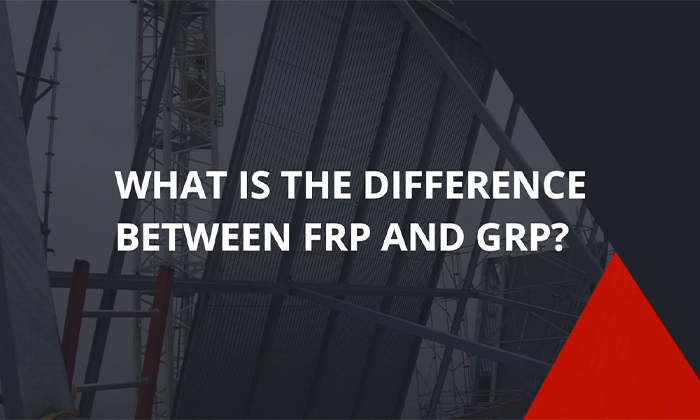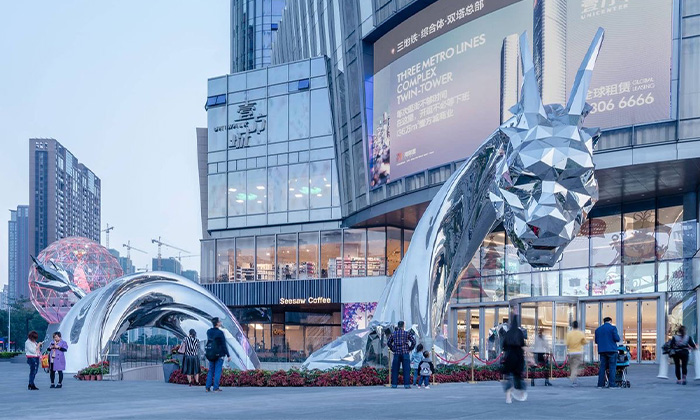 May 24, 2024
May 24, 2024
FRP and GRP both refer to fiberglass, but what are the differences between them?
Let me provide a detailed explanation.
FRP is the abbreviation for (Fiber Reinforced Polymer)
GRP is the abbreviation for (Glass Reinforced Plastic)
FRP and GRP are two commonly used composite materials, playing an increasingly important role in industries such as manufacturing, construction, and transportation. Although they both belong to the fiber-reinforced composite material family, there are significant differences between them in terms of composition, manufacturing processes, performance characteristics, and application areas.
The main differences between FRP and GRP are:
In terms of material composition, the fundamental difference between FRP and GRP lies in the type of reinforcement fibers used. FRP utilizes high-performance carbon fibers or aramid fibers, while GRP employs the more affordable glass fibers. The difference in fiber materials is the key factor that determines the significant variations between these two composite materials in mechanical properties, chemical stability, weight, and other characteristics.
As the primary reinforcement material for FRP, carbon fibers have a lower density but significantly higher strength and stiffness compared to glass fibers. This means that FRP, with the same dimensions and weight, exhibits superior tensile strength, flexural strength, and impact resistance. Additionally, carbon fibers possess excellent corrosion resistance and high-temperature tolerance, making them more suitable for applications in harsh environments. In contrast, while glass fibers used in GRP are more cost-effective, their mechanical performance is slightly inferior to that of carbon fibers.
On the other hand, the selection of polymer matrix materials is also an important distinction between FRP and GRP. FRP typically employs thermosetting high-polymer materials such as epoxy resin or polyester resin as the matrix, while GRP more commonly uses unsaturated polyester resins or phenolic resins. These different matrix materials impart distinct characteristics to FRP and GRP, such as chemical resistance, insulation properties, and weatherability.
In terms of manufacturing processes, there are also significant differences between FRP and GRP. FRP production typically involves labor-intensive techniques such as hand lay-up or vacuum infusion, which require higher technical skill and result in lower production efficiency. In contrast, GRP can be manufactured using simpler molding or filament winding processes, which are more efficient. These process differences also directly impact the cost levels of the two materials.
Comprehensive Performance Differences
Due to the differences in raw materials and manufacturing processes, FRP and GRP also exhibit distinct performance characteristics in various aspects:
Mechanical Performance: Leveraging the high-strength and high-stiffness carbon fibers or aramid fibers as reinforcement, FRP outperforms GRP in terms of tensile strength, flexural strength, and impact resistance. This makes FRP more suitable for structural applications that require high strength and rigidity.
Corrosion Resistance: Based on the unsaturated polyester or phenolic resin matrix, GRP exhibits excellent resistance to chemical corrosion, performing well in acidic, alkaline, and saline environments. This gives GRP an advantage in the manufacturing of chemical equipment such as pipes and storage tanks. In contrast, the corrosion resistance of FRP is relatively weaker.
Weatherability: Due to the use of resin matrices with good resistance to UV radiation and weathering, GRP demonstrates superior aging resistance compared to FRP. This makes GRP more suitable for outdoor applications, such as building decorations and marine vessels, where exposure to the elements is a concern.
Electrical Insulation: FRP, with the use of superior insulating epoxy resin as the matrix material, finds more widespread applications in the field of electrical insulation. In comparison, the insulation performance of GRP is slightly inferior to that of FRP.
Weight: Due to the use of lightweight yet high-strength carbon fibers or aramid fibers, the overall density of FRP is much lower than that of GRP. This gives FRP an advantage in applications where weight reduction is critical, such as in the aerospace and transportation industries.
Cost: Due to the differences in raw materials and manufacturing processes, the production cost of GRP is generally lower than that of FRP. This makes GRP more competitive in some cost-sensitive industrial and infrastructure applications.
Differences in Application Areas
Based on the aforementioned performance differences, FRP and GRP also exhibit distinct applications in practice:
FRP is primarily used in high-end manufacturing sectors such as aerospace, automotive, and wind power, as well as in infrastructure construction where the structural components need to withstand heavy loads. Its excellent mechanical properties, corrosion resistance, and fatigue resistance make it highly sought after in these fields.
GRP, on the other hand, is widely used in the chemical, marine, and construction industries. Its corrosion resistance, weatherability, and relatively low cost make it an important material in the manufacturing of pipes, storage tanks, and ships. In addition, GRP products are also extensively used in building decorations and wall panels.
In some areas where a balance between material performance and cost is required, such as in sports equipment and furniture, both FRP and GRP may be adopted to varying degrees depending on the specific needs.
In summary, although both FRP and GRP are fiber-reinforced composite materials, due to the differences in raw materials, manufacturing processes, and performance characteristics, they each exhibit their own advantages in practical applications. When selecting between these two materials, enterprises or engineers need to conduct a comprehensive comparative analysis based on the specific usage environment, loading requirements, cost budget, and other factors, in order to make the most optimal choice.
Our factory primarily uses GRP composite materials to custom-design various IP Sculptures, Electroplated And Painted Animal And Plant Sculptures, Luminous Sculptures, and Mosaic Animal Sculptures.
If you are interested in our products, please visit our website at https://www.tiancaisculpture.com/ to learn more.
We also provide custom sizes and colors according to your specifications. Please contact us for pricing information at joey@tiancaisculpture.com
TEL/WhatsApp/Skype: +86 15302624559
We welcome you to provide us with your design ideas and create the artistic beauty that belongs to you.
Sculpture Supplier: Tiancai

